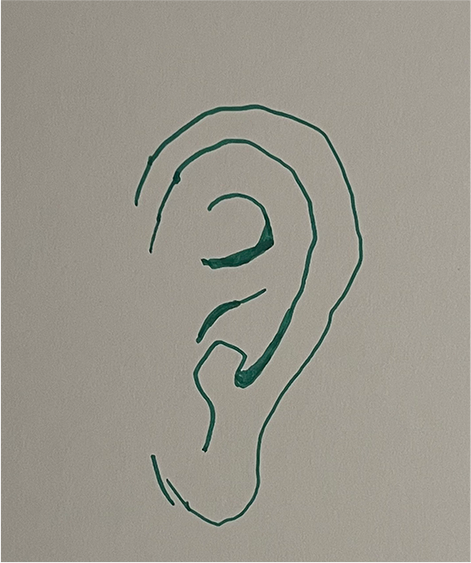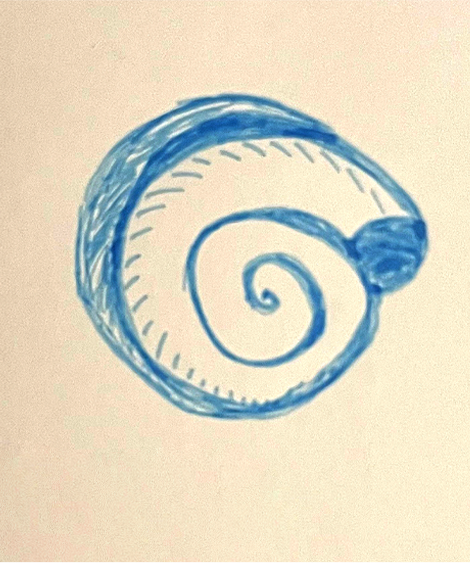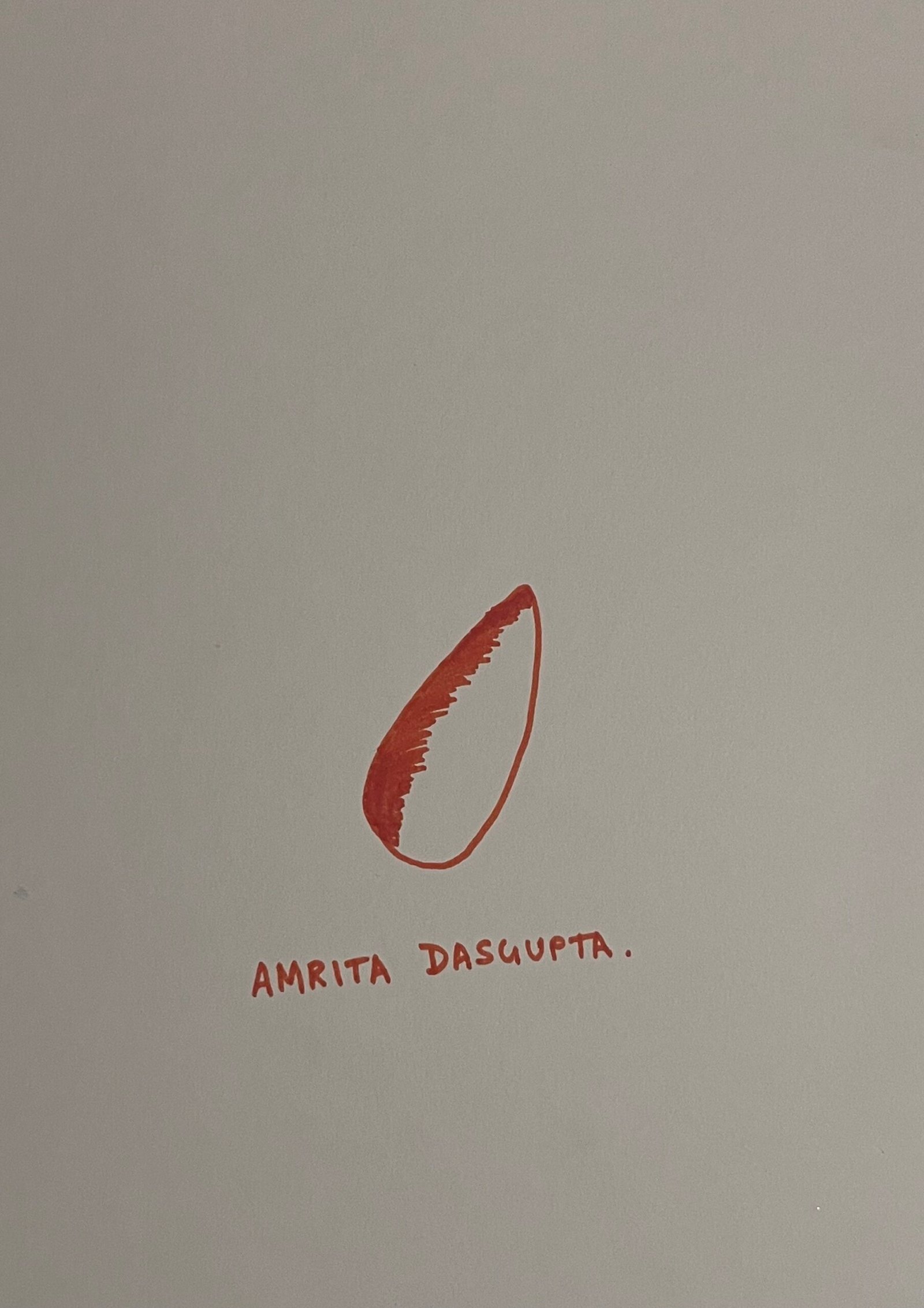Recording Refugee Lives Conducted By Amrita DasGupta
On pondering on the problems faced by the marginalized and the traumatized while sharing their life experiences. During Amrita’s PhD it became evident that direct interviews made the marginalized communities, like the sex workers undergo the same trauma of the lived realities of their life. As an attempt to provide safe spaces to voice personal realities she devised an arts workshop where these women drew about their life experiences depending on a key wordgiven to them. This provided a safe space and opened windows to never voiced experiences. As these women are hardly recorded in archives owing to their ostracized occupation, the art pieces act as the “archive of the future”- material pieces that keeps back a record of their life for the future. “Recording Refugee Lives” is also born out of the same philosophy to. record human traumatic experiences of migrations without causing the trauma again or reducing the possibilities of trauma caused by memory and amnesia triggered by direct interview questions and open conversations.
The workshop will also focus on reading the silences of the archives and re-writing history by prioritizing lived experiences. The workshop will highlight the use of arts-based practices in doing research, collecting information and the ways of disseminating the findings to a larger audience. The aspects of ethics and consent will be discussed in details and the positive and negative roles of NGOs at the grassroots level will be highlighted. it will be an arts based workshop where the participants will be invited to draw on their life on a key word(Root) and record the experience to judge first-hand how the method works.
Place: Birkbeck, University of London
Funded By Consortium of Humanities and the Arts South-east England (CHASE).
Date: 3rd December 2024
Participants: 7
Outcomes (Published By Consent): Picture archive and transcripts with audio.


CLICK HERE TO HERE AUDIO
TRANSCRIPTS

The Ear Molly Cavlin
Molly: My picture is over here because I was struggling to think of anything that resembles a root.
Amrita: Why is it green?
Molly: I just really like the colour green. I don’t really know. I guess, it has always been the colour I have always wanted. I think, I was really struggling to think of something that resembled a root. Mainly because my parents are very different people. You will never understand how they ever got together. And I just thought maybe what really resembles a root for me and maybe it was a kind of an openness and like being receptive to people. That was also how I was brought up. If that makes sense.
Amrita: I wonder why is it green? Maybe next workshop?
Molly: I don’t know. I just kind of left drawn to it.
Amrita: It can just be that!

The Shell Sasha Morse
Sasha: it’s a shell
Amrita: I can tell it’s a shell. Why is it blue?
Sasha: It is my favourite colours.
Amrita: We clearly are not thinking about why we have favourite colours?
Sasha: I think it is my favourite colour because I’m drawn to the sea. When I was drawing, I was thinking about the expansive point on the horizon that meets the sea. At this time of day, the whiteness crosses over to the white and blue, and I love that. But, shell, my grandma collects shells and exchanges shell. Thinking about roots and people, I think I share that with my grandparents. It’s been a long time since I have seen her. I will see her this weekend and I’m being very conscious of the slippage of time. Also thinking of that feeling, very present felling, of holding a shell on the palm of your hand that makes me feel incredibly rooted.
Amrita; The tangibility of it all but then it’s temporary.
Sasha: Temporal, spatial relationships to objects.
Amrita: Shell in many cultures, especially in the Hawaiian cultural is a very tangible, spiritual—holistic presence of a community and their resilient life and livelihoods. So, it has an entire history being etched on a shell. As well as the fish hooks they use.
Sasha: And it is used as currency in some cultures. And I wanted to draw it in a spiral way also thinking about the ear, and time and exchange.
Amrita: Wow we have a continuity of thought. Its telepathic.

Places Subhadeep Mukherjee
Subhadip: Not as symbolic as what others have drawn but I was thinking of how different locations and different stops, different sorts of points—geographically, where I was located in different points in time and still continue to be located. The concept of absent present in a way because let’s suppose if I am in my home in India then how Canterbury have an impact on my life. Maybe I have forgotten to bring something from Canterbury and that is perhaps affect me in my home. Maybe I like a certain kind of food or company in Canterbury that I missing my home in India. And vice versa. And how, having spent time in different spaces, how they continue to influence my behaviour and how I handle situations from my time in Delhi, from my time in different places in Kolkata and also in all these the absent-presence of my friends and family who I only see through my phone screen because of the movement and because present becomes an altogether different experience when I go bac to my family. Similarly, when I come back to my friends in Canterbury. So, just thinking how across time and space how different kind of places continue to shape you and your experiences of the world.
Amrita: Can you tell us the elements that are there?
Subhadip: This is a phone.
Amrita: Your family on the screen
Subhadip: My mom and dad and maybe a friend , I don’t know who. The cathedral at Canterbury is important. I look at it from my campus
Amrita: Its iconic and it says its Canterbury
Subhadip: That architecture gives me a sense of calmness. I don’t know why. Amongst everything else in the city. As Kent is uphill. You can see the city on the top and the cathedral just stands out there.

The Boat
(Anonymous)

The Key
(Anonymous)

The Bead 9
(Anonymous)

